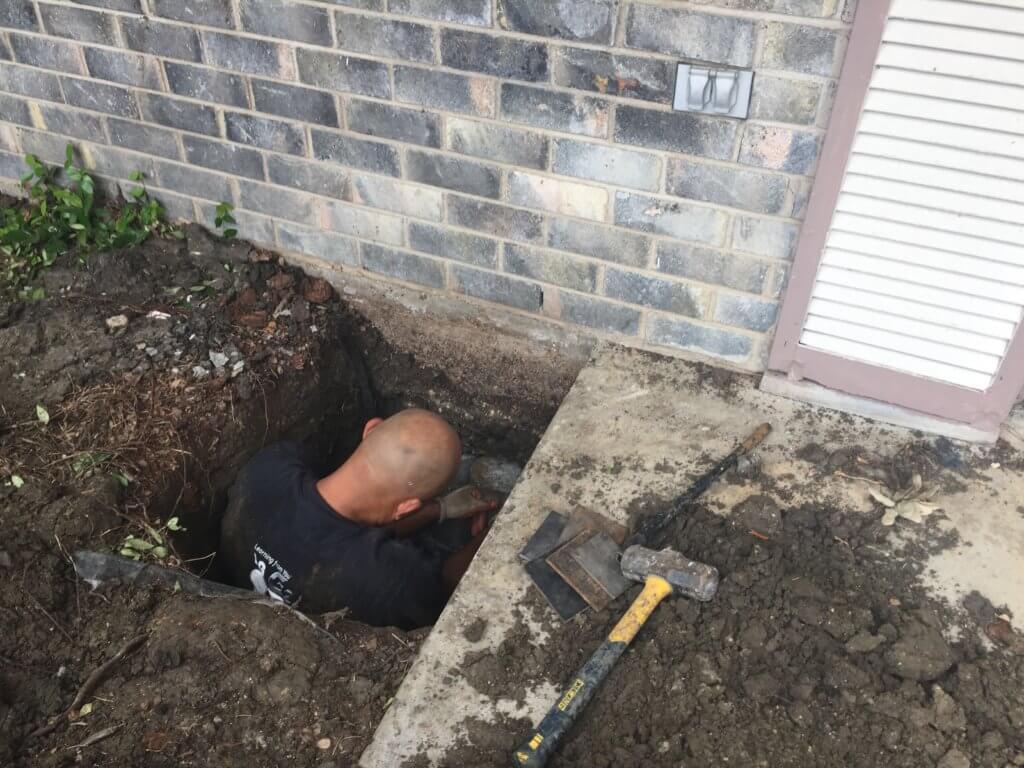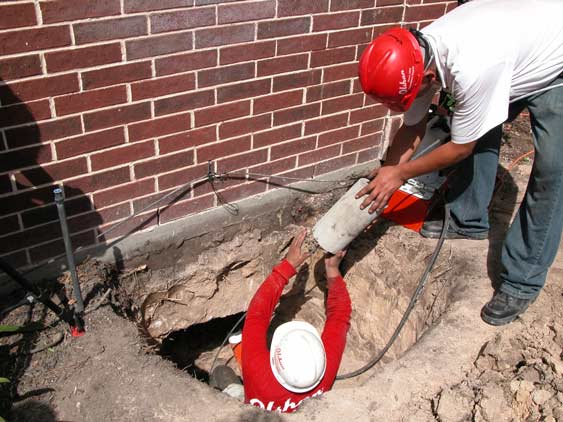Foundation Repair Oklahoma City OK: Tips for Finding the Right Professionals
Foundation Repair Oklahoma City OK: Tips for Finding the Right Professionals
Blog Article
Exploring Different Techniques of Foundation Repair Work for Numerous Dirt Types
Structure fixing is a vital element of maintaining architectural honesty, particularly when thinking about the varied challenges positioned by various soil types. The complexity of soil habits under varying problems requires a tailored approach to repair, making sure optimum services such as helical piers for unpredictable soils or chemical cements for natural layers.
Recognizing Soil Types
Dirt types play an important duty in the stability and long life of structure foundations, making it important for property owners and building and construction experts to understand their characteristics and actions. The interaction between soil and structure can identify the architectural integrity of a structure. There are several dirt types, each with distinctive physical residential or commercial properties that influence exactly how foundations are made and maintained.
Granular dirts, such as sand and gravel, give good drainage and are usually thought about stable. They have high load-bearing capacities, which can sustain much heavier frameworks. Nonetheless, these dirts can move otherwise compacted appropriately, causing possible settlement concerns. In contrast, natural dirts like silts and clays show various actions. These dirts often tend to keep wetness, and their load-bearing capability can differ significantly with changes in moisture content.
Rocky soils, understood for their stamina and stability, offer superb assistance for foundations yet may call for specialized tools for excavation. On the other hand, fertile dirts, which are a well balanced mix of clay, silt, and sand, frequently provide positive problems for foundation support due to their moderate drain homes.

Recognizing these soil types is essential for selecting proper structure repair work approaches, guaranteeing the resilience and security of frameworks over time.
Difficulties With Large Clay
Amongst the different soil types, extensive clay provides unique difficulties for foundation security because of its tendency to go through significant quantity modifications with dampness variant. This sort of soil swells when wet and contracts when dry, which can put in considerable pressure on structures. These changes can cause foundation breaking, heaving, and negotiation issues, positioning considerable threats to the architectural stability of structures.
The difficulties with extensive clay are aggravated by its plasticity index, which gauges the dirt's capacity to alter form and quantity. A high plasticity index suggests better possibility for movement, enhancing the likelihood of damage to foundations. This is especially bothersome in areas experiencing regular or extreme climate changes, where cycles of wet and dry problems are usual.
Moreover, the depth of extensive clay layers can differ, complicating the analysis and preparation of suitable structure repair service methods. These intricacies need a thorough geotechnical examination to make certain effective foundation fixing strategies are applied, highlighting the relevance of resolving large clay challenges with knowledge and treatment.
Solutions for Sandy Soils
Sandy dirts, identified by their huge fragment dimension and reduced communication, existing distinctive obstacles for structure stability due to their propensity for moving and disintegration. By securing the foundation to much deeper, extra secure soil layers, these systems can offer the necessary support to combat the shifting nature of sandy dirts.
One more recommended approach is the application of dirt stablizing approaches. Chemical grouting, for circumstances, involves injecting a stabilizing agent into the dirt, which improves cohesion and lowers leaks in the structure. This procedure helps to strengthen the sandy substratum, consequently reducing the risk of find out here erosion and movement.
In addition, mounting correct water drainage systems is important in sandy soil problems. Making sure sufficient drainage can prevent water build-up around the foundation, which typically intensifies disintegration and soil variation. Techniques such as French drains pipes or surface grading can be Read Full Report utilized to route water far from the building boundary.
Addressing Resolving in Loamy Soils
Fertile soils, recognized for their well balanced mix of clay, silt, and sand, use an abundant base for numerous structures but can sometimes cause structure settling due to their one-of-a-kind composition. This well balanced appearance offers superb drainage and nutrient retention, making it excellent for agriculture and landscape design. However, this exact same feature can end up being troublesome for structures, as shifts in dampness content can trigger the dirt to increase or contract, causing resolving.
Exact dirt testing is important to identify the particular composition and moisture material of the loam. When data is collected, applying correct water drainage solutions is important to keep consistent moisture degrees, thereby reducing the risk of soil tightening or development.

Cutting-edge Repair Methods
In the world of foundation fixing, innovative techniques are consistently being established to resolve the complicated tests presented by various soil conditions. As dirt types differ significantly in their structural properties, standard methods may not always are sufficient. The advent of new modern technologies in foundation repair service gives extra customized services, making certain stability and durability.
One remarkable innovation is using helical piers, which are specifically effective in large or unpredictable soils (foundation repair Oklahoma). These piers are screwed right into the ground until they reach a steady layer of dirt, supplying strong support for the foundation over. This approach lessens disturbance and is versatile to different soil types, making it a versatile option
One more cutting-edge strategy is the application of polyurethane foam shot. This approach entails infusing high-density polyurethane foam beneath the structure to fill voids and stabilize the structure. It is a less invasive alternative to conventional foundation, using fast setup with marginal disruption to the surrounding area.
Furthermore, soil stablizing approaches, such as making use of chemical grouts, have actually gained grip. These substances boost dirt toughness and lower permeability, avoiding future shifting. Collectively, these innovative repair work techniques offer efficient services for the diverse challenges postured by differing dirt problems.
Final Thought

Foundation fixing is an essential aspect of keeping structural stability, especially when thinking about the varied difficulties posed by different dirt types (foundation repair okc). The intricacy of dirt behavior under varying conditions necessitates a tailored strategy to fix, guaranteeing optimum options such as helical piers for unpredictable soils or chemical grouts for cohesive layers. By anchoring the structure to deeper, a lot more secure soil layers, these systems can offer the necessary assistance to counteract the moving nature of sandy dirts
Foundation repair service calls for mindful factor to consider of dirt types to guarantee stability and durability. Chemical grouts boost soil strength and lower permeability in cohesive soils.
Report this page